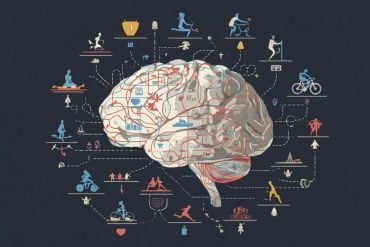Summary: According to a new study, several anxiety disorders share a common underlying trait; a fear of the unknown.
Source: University of Illinois.
Several anxiety disorders, including panic disorder, social anxiety disorder and specific phobias, share a common underlying trait: increased sensitivity to uncertain threat, or fear of the unknown, report researchers from the University of Illinois at Chicago. The finding could help steer treatment of these disorders away from diagnosis-based therapies to treating their common characteristics.
“We may, one day, open up clinics that focus on treating the underlying common neurobiology of the patient’s symptoms instead of individual diagnoses,” says Stephanie Gorka, research assistant professor of psychiatry and a clinical psychologist in the UIC College of Medicine. “A treatment, or set of treatments, focused on sensitivity to uncertain threat could result in a more impactful and efficient way of treating a variety of anxiety disorders and symptoms.”
Uncertain threat is unpredictable in its timing, intensity, frequency or duration and elicits a generalized feeling of apprehension and hypervigilance.
“It’s what we call anticipatory anxiety,” says Gorka, who is corresponding author on the study, published in the Journal of Abnormal Psychology. “It could be something like not knowing exactly when your doctor will call with test results.”
When a person is sensitive to uncertain threat, they can spend the entire day anxious and concerned that something bad could happen to them, Gorka said. Panic disorder is one example — patients are constantly anxious over the fact that they could have a panic attack at any moment, she said.
Predictable threat, on the other hand, produces a discrete fight-or-flight response that has a clear trigger, like a hungry bear coming at you, and it abates once the threat has resolved.
Previous research by Gorka and colleagues suggests that heightened sensitivity to uncertain threat may be an important factor that characterizes the fear-based internalizing psychopathologies, but most research focuses on panic disorder, so its role in the other fear-based disorders — particularly social anxiety disorder and specific phobias — remains unclear.
Gorka and her colleagues looked at data from participants who underwent a startle task in two different studies performed at UIC.
The two studies, of participants ages 18 to 65, included 25 participants with major depressive disorder; 29 with generalized anxiety disorder; 41 with social anxiety disorder; and 24 with a specific phobia. Forty-one control subjects had no current or prior diagnoses of psychopathology.
The researchers measured the participants’ eye-blink responses to predictable and unpredictable mild electric shocks to the wrist. To elicit blinking during the shock-task, the participants heard short, acoustic tones via headphones.
“No matter who you are or what your mental health status, you are going to blink in response to the tone,” Gorka said. “It’s a natural reflex, so everyone does it, without exception.”
The researchers measured the strength of the blinks using an electrode under the participants’ eyes. They compared the strength of the blinks in response to tones delivered during the predictable shock to the blinks during the unpredictable shock.

They found that participants with social anxiety disorder or a specific phobia blinked much more strongly during the unpredictable shocks, when compared to participants without a mental health diagnosis or to participants with major depressive disorder or generalized anxiety disorder.
“We classify so many different mood and anxiety disorders, and each has its own set of guidelines for treatment, but if we spend time treating their shared characteristics, we might make better progress,” said Dr. K. Luan Phan, professor of psychiatry and director of the mood and anxiety disorders research program and senior author on the study. “Knowing that sensitivity to uncertain threat underlies all of the fear-based anxiety disorders also suggests that drugs that help specifically target this sensitivity could be used or developed to treat these disorders.”
Lynne Lieberman and Stewart Shankman of UIC are co-authors on the study.
Funding: This research was funded by grants R01MH101497 and R01MH098093 from the National Institute of Mental Health. Other support was provided by the UIC Center for Clinical and Translational Science award number UL1RR029879 from the National Center for Research Resources.
Source: Cléa Desjardins – University of Illinois
Image Source: NeuroscienceNews.com image is in the public domain.
Original Research: The study will appear in Journal of Abnormal Psychology.
[cbtabs][cbtab title=”MLA”]University of Illinois. “Fear of the Unknown Common to May Anxiety Disorders.” NeuroscienceNews. NeuroscienceNews, 19 November 2016.
<https://neurosciencenews.com/anxiety-disorders-unknown-fear-5558/>.[/cbtab][cbtab title=”APA”]University of Illinois. (2016, November 19). Fear of the Unknown Common to May Anxiety Disorders. NeuroscienceNews. Retrieved November 19, 2016 from https://neurosciencenews.com/anxiety-disorders-unknown-fear-5558/[/cbtab][cbtab title=”Chicago”]University of Illinois. “Fear of the Unknown Common to May Anxiety Disorders.” https://neurosciencenews.com/anxiety-disorders-unknown-fear-5558/ (accessed November 19, 2016).[/cbtab][/cbtabs]







